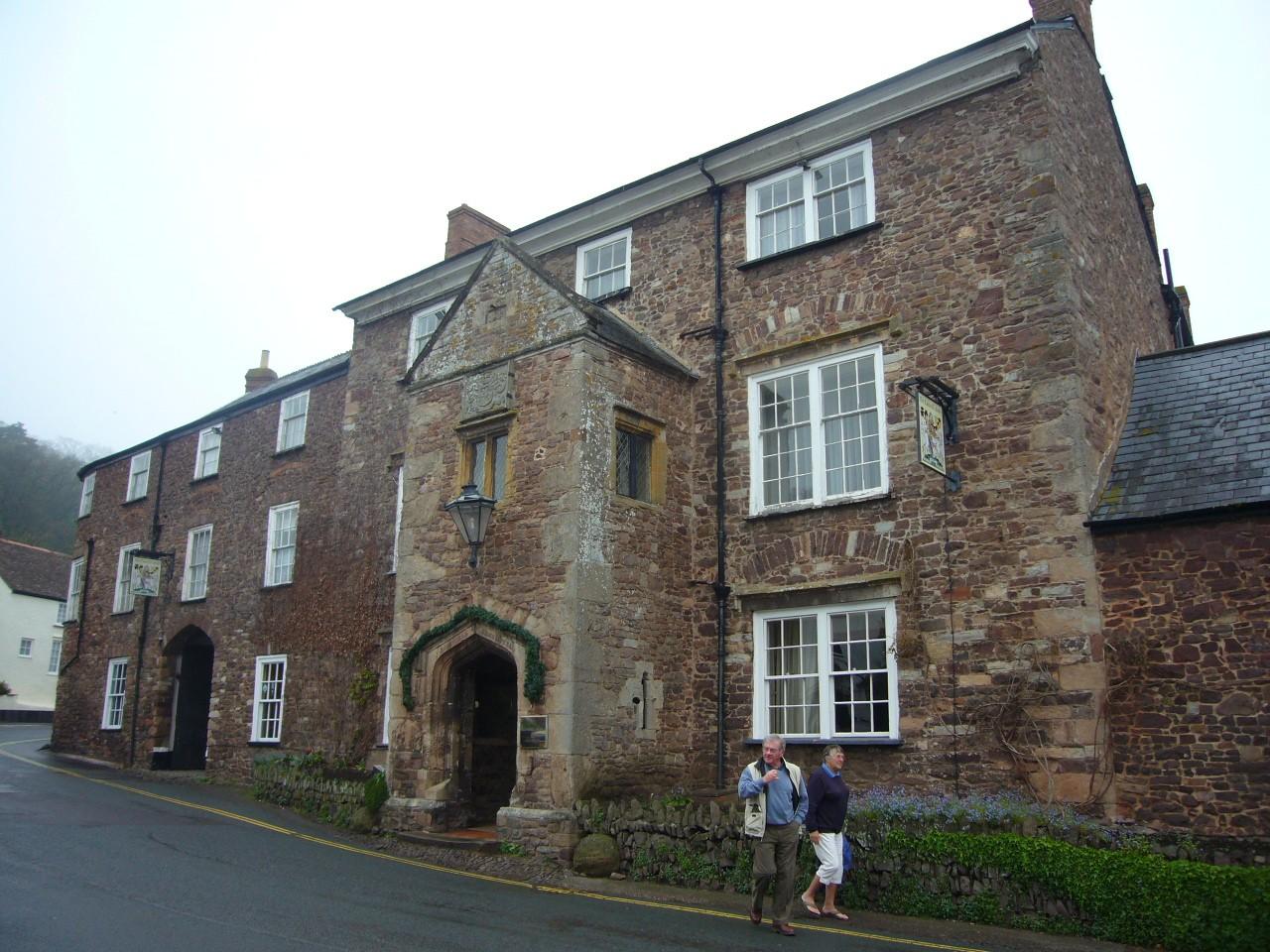Dunster, Luttrell Arms

The Luttrell Arms stands on the site of the Ship inn and other properties. The inn was said to have been in ruins in 1777 and was described as the old Ship. It was rebuilt, and probably extended into adjoining properties, as the Luttrell Arms from 1779 when it was licensed under that name. It comprised a dining room, two handsome parlours and seven airy bedchambers and good stabling. As early as 1779 guests were allowed to go from the garden onto a terrace in the old park and might have keys to the gates into the woods and pleasure grounds. John Mountstephens was innkeeper until his death in 1797 when his stock was sold.
By the 19th century the Luttrell Arms had an excellent reputation as a high-class hotel and posting house. In 1839 it was said to be ‘much extolled by visitors and commercial gentlemen for the excellent accommodation it affords’. It was also a staging post for coaches to Bristol and Taunton. In 1863 the Withycombes who ran the hotel agreed with Minehead hoteliers and coach proprietors to fix and publish charges for the journey from Williton station and not to persuade passengers to stop at one hotel in preference to others. By 1871 there were six resident staff besides the hotel keeper and his family. On census night guests included a barrister with his family and servant, and a clergyman. Guests were permitted to visit the Castle gardens any day except Sunday. The arrival of the railway near Dunster probably drew more visitors and by 1883 the hotel sent a carriage to meet every train. A visitor in 1891 was the novelist Maria M Grant. In 1897 the hotel hired out horses and carriages and sold mineral waters, wines and beers in bulk from local breweries in casks of between 4 ½ and 36 gallons.
By 1910 it was one of the most valuable properties in Dunster, worth nearly three times as much as the mills, but surprisingly the bathroom had been converted to a housemaids’ store and several bedrooms had no fireplace. Further extensions were made in 1923 to provide a carving room and china pantry and it acquired its own garage. In 1950, when it passed out of Luttrell ownership, it had 21 bedrooms and four bathrooms and could seat 50 at dinner. Although the coach house was then a garage for visitors’ cars there were still ten loose boxes.
The building, at the north-east end of High Street, occupies a very large site consisting of three medieval burgages. The present building dates from the late 15th century and the main section is of three storeys with a central two storey gabled porch probably of the 1620s. There are many early features including window and door openings and a former rear hall with oak framed windows through two floors and an arch-braced roof, previously hidden by a plaster ceiling. The building has been altered and extended on several occasions but retains plasterwork, probably of the 1620s, in two rooms. It stands on the site of three properties. The most northerly was built on by Isaac the merchant in the 13th century. His widow sold it to Roger Homond in whose family it descended. Richard Homond bought the middle burgage in 1395. His daughter and heir Ellen married William Dodesham and they occupied the middle house and let the adjoining one, which had a hall and shop with grange, stable and garden at the rear. Ellen’s son, William sold both properties to Richard Luttrell in 1443. The most southerly was the property of wealthy merchant Patrick Everard whose widow sold it in 1411 to Thomas Hody of Woolavington who was Sir Hugh Luttrell’s receiver and would have needed a good house in Dunster. In 1442 Hody sold it to Richard Luttrell who may have been responsible for creating the large late 15th-century house, which forms the core of the hotel. In 1499 it was conveyed to Sir Hugh Luttrell and his wife and descended with the Dunster manor estate.
